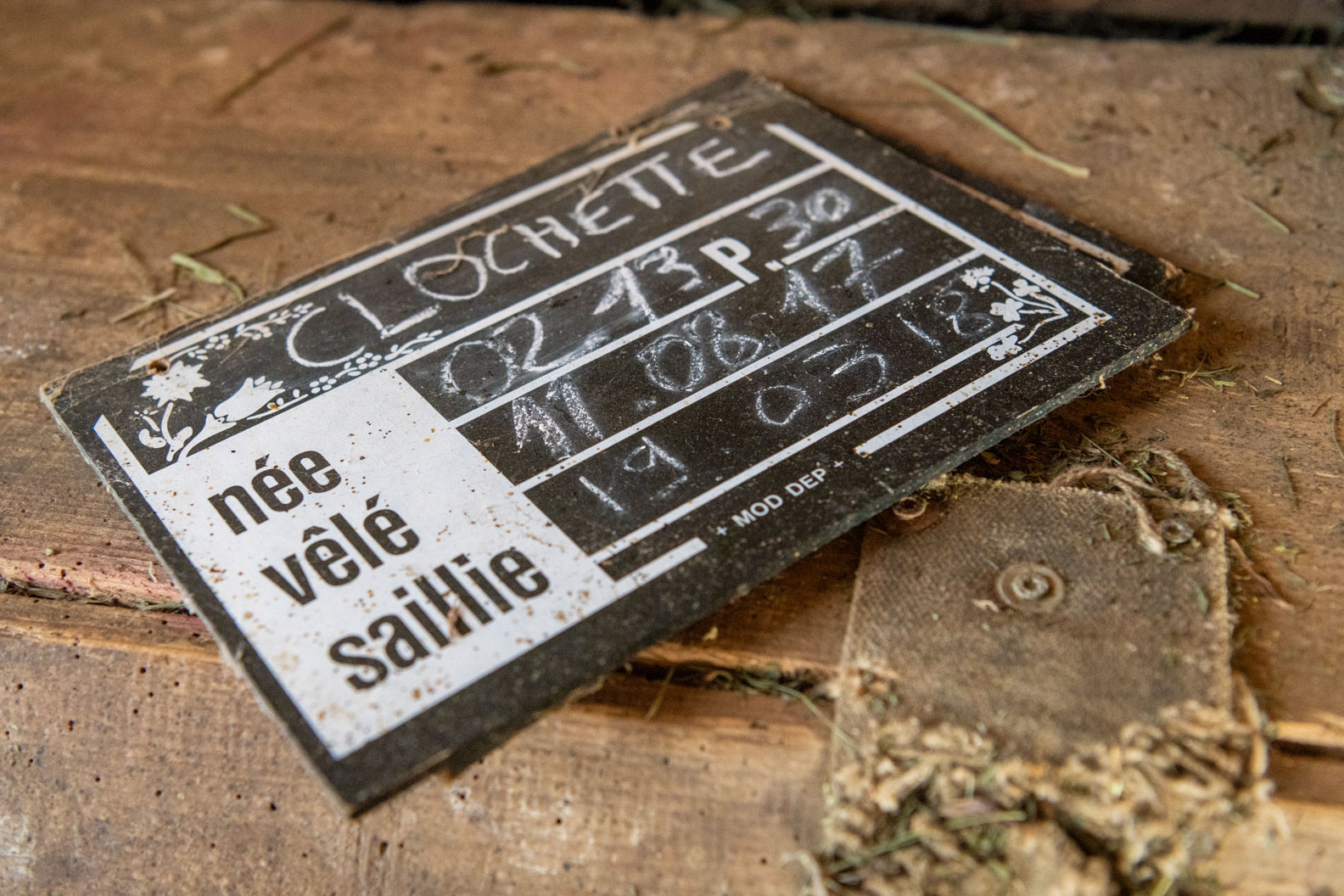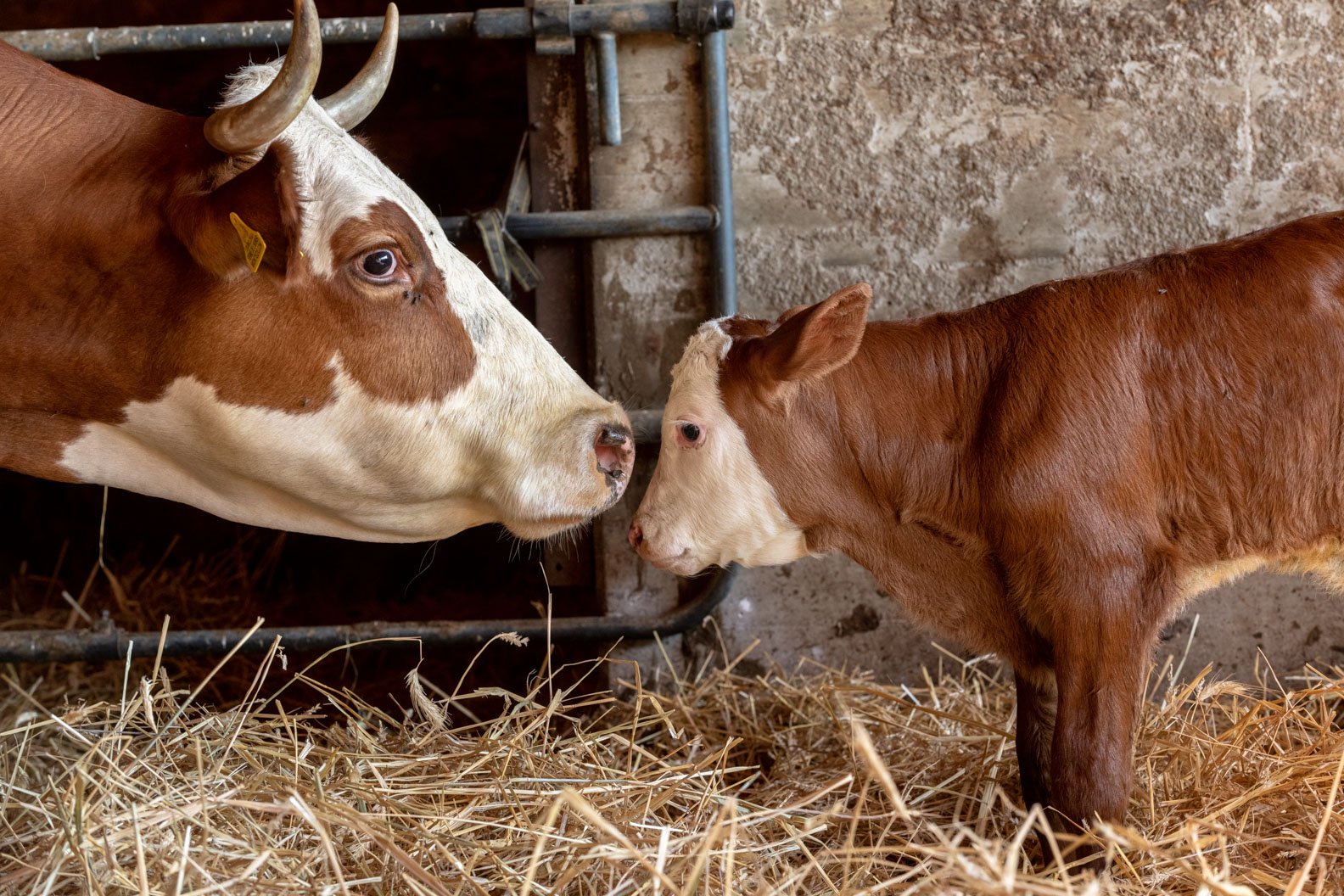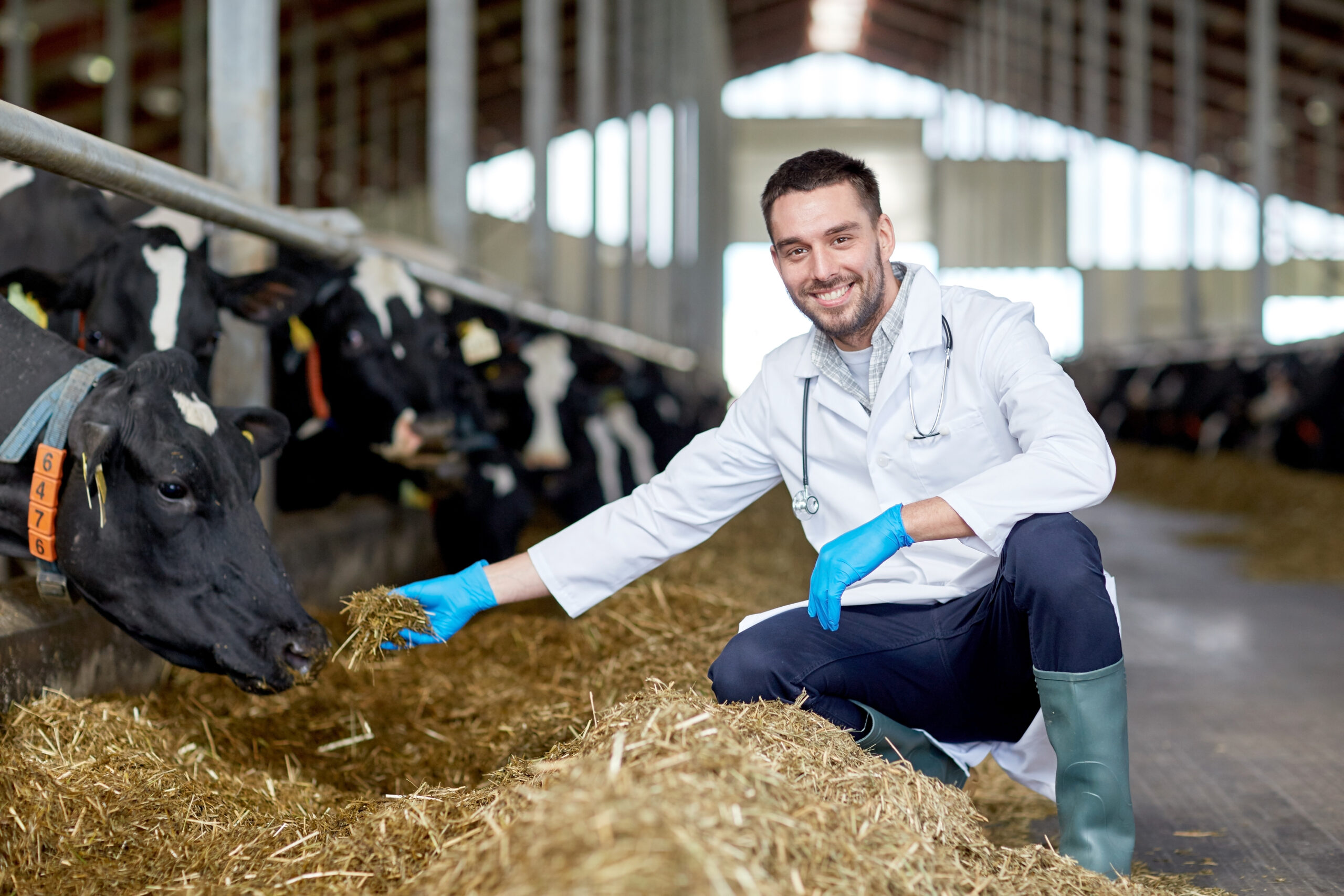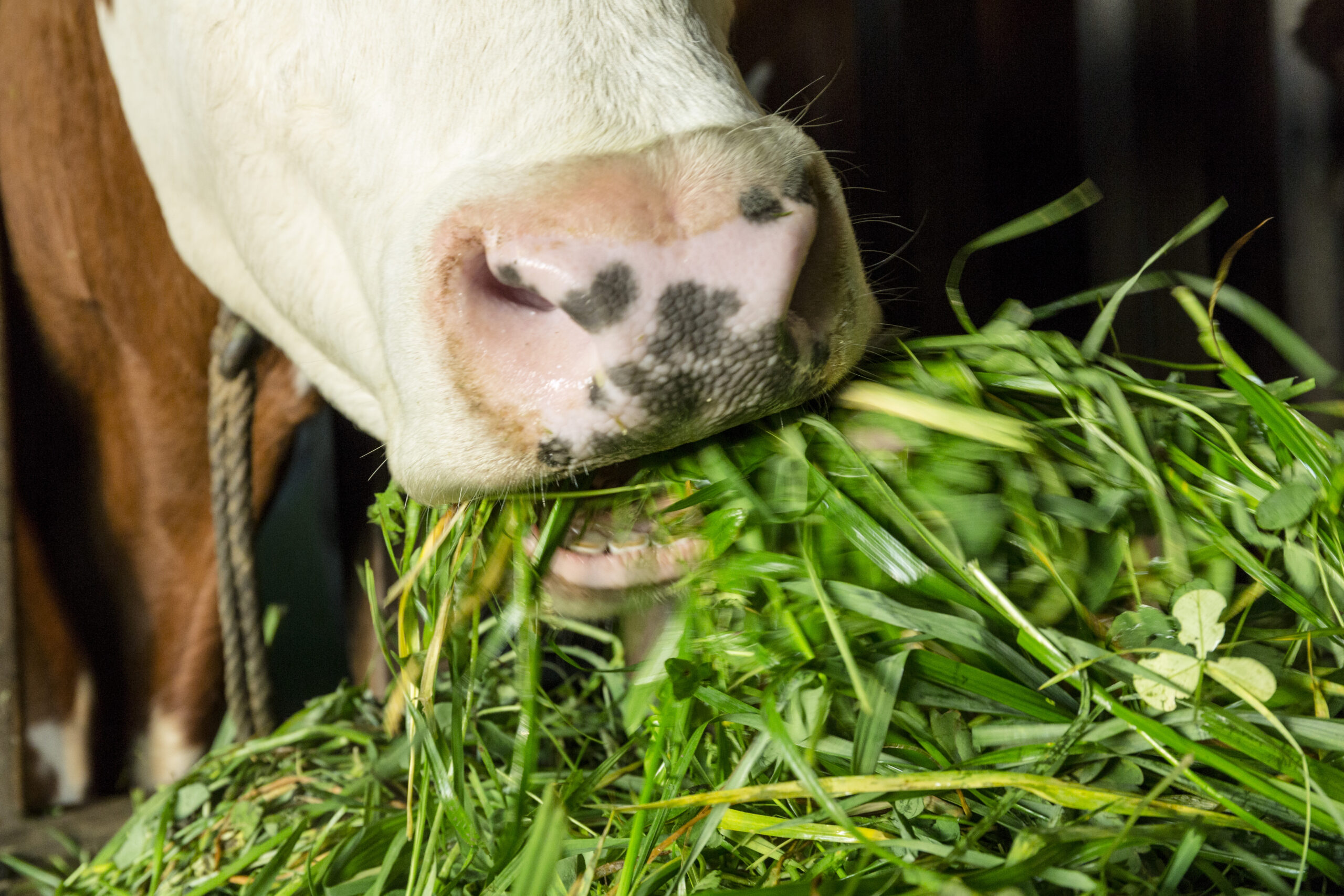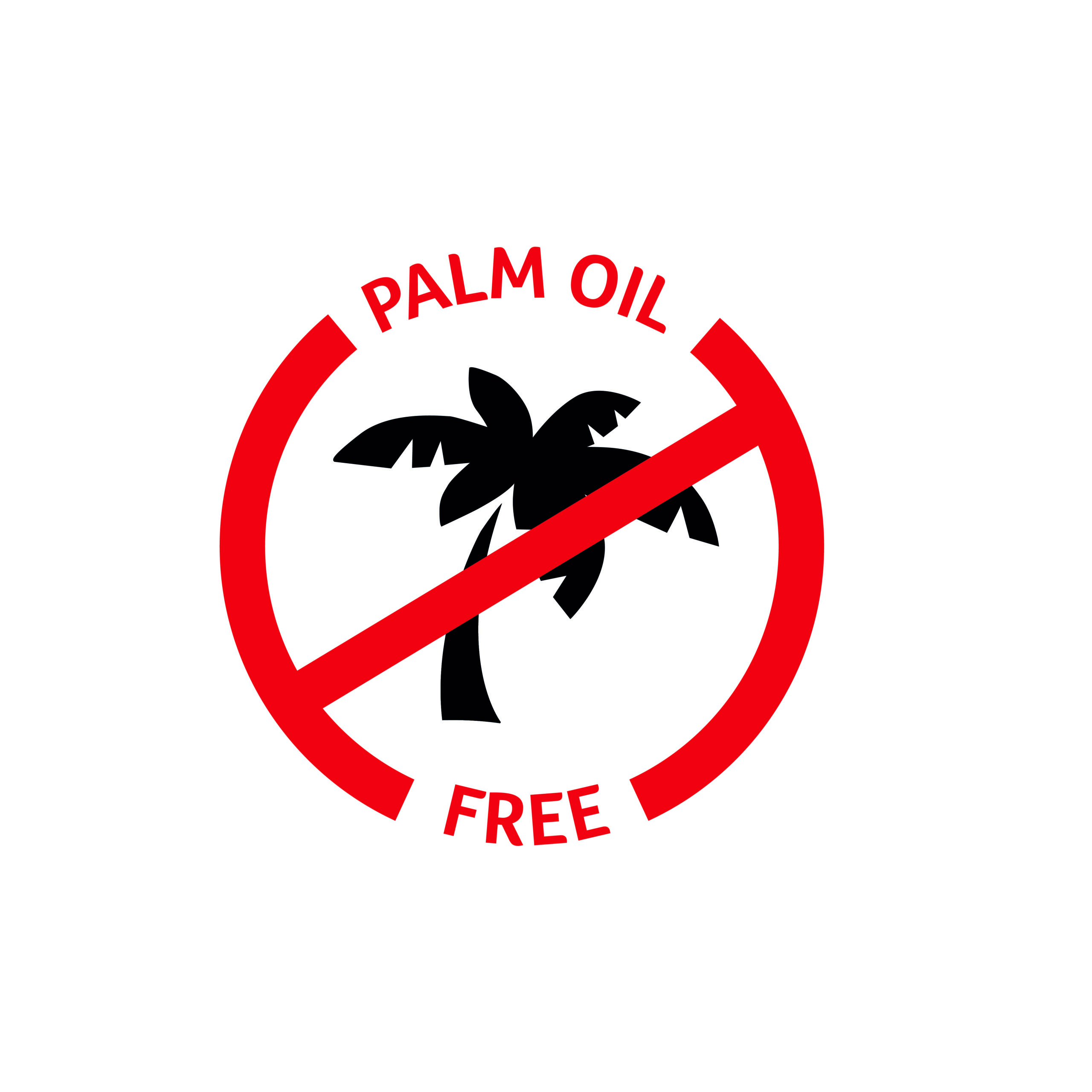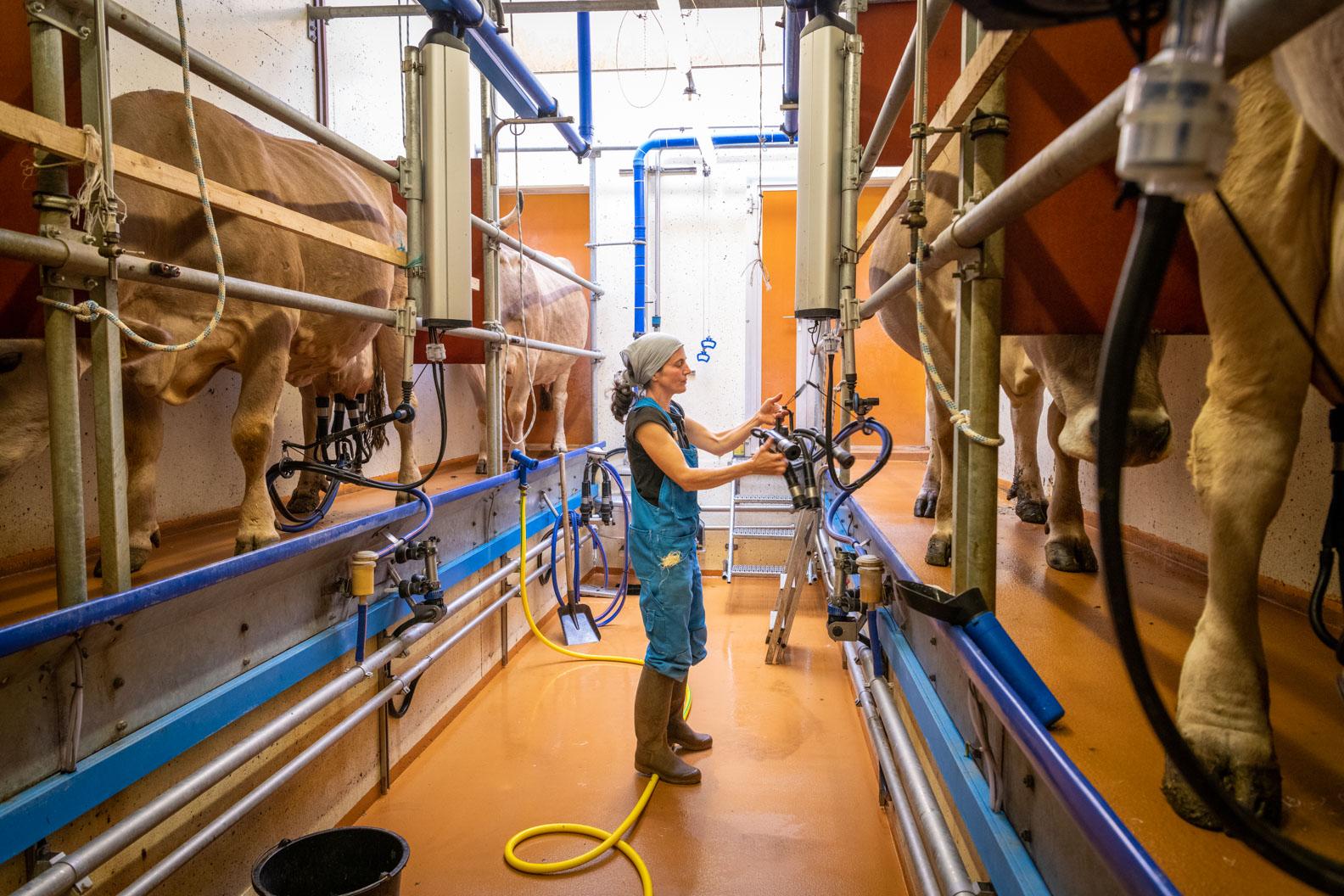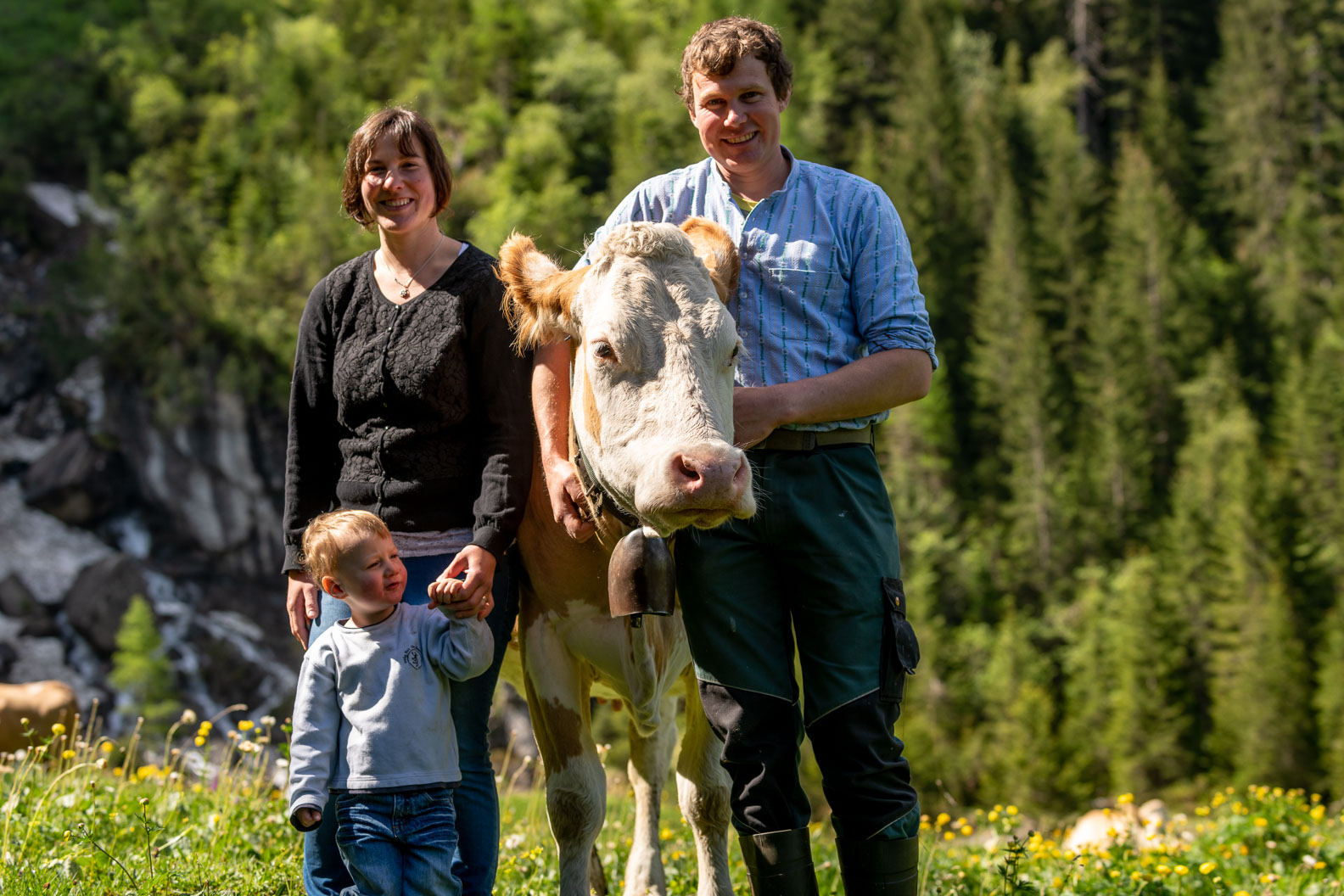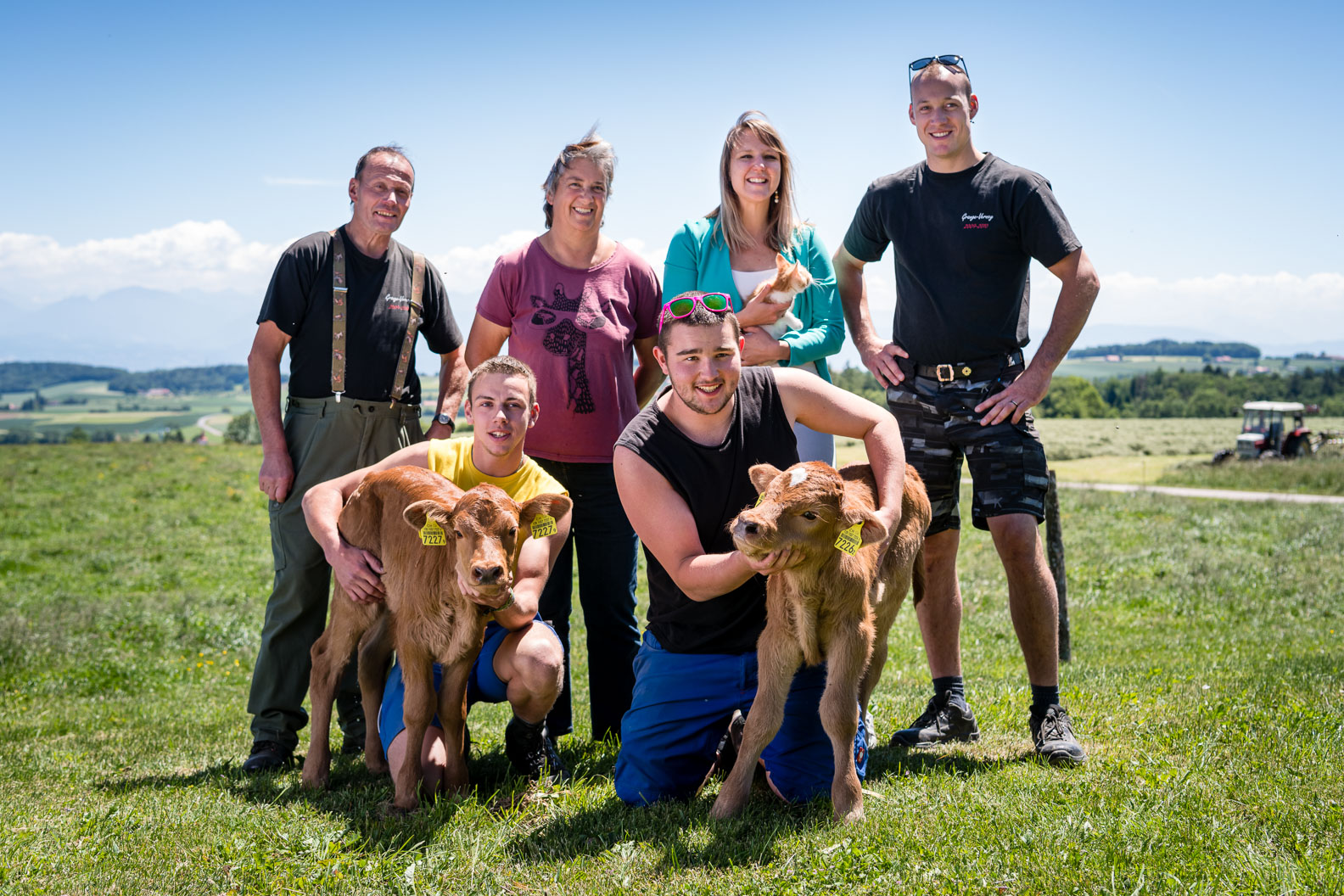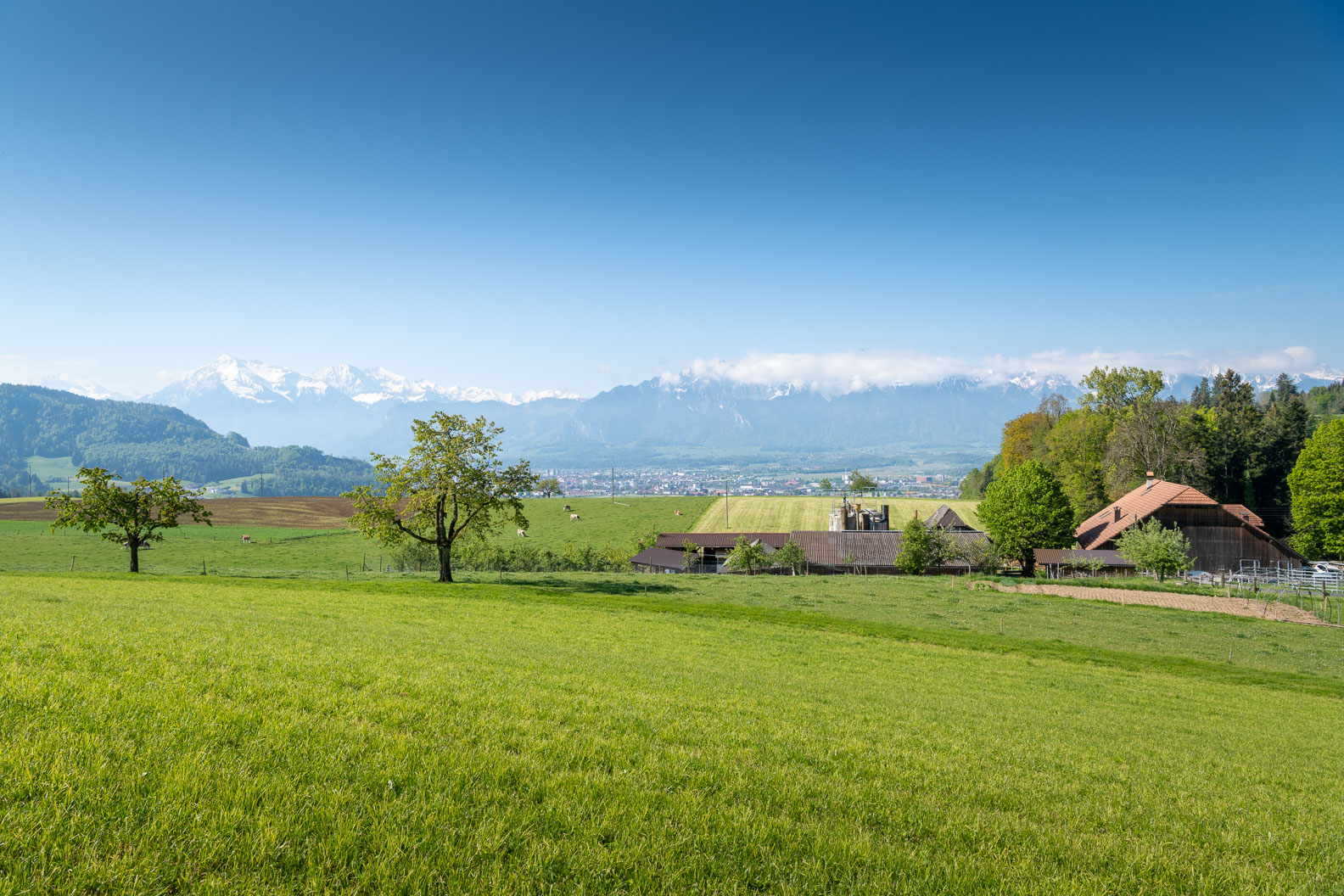High standard of animal welfare
To ensure a high standard of animal welfare, at least one of the Swiss federal animal welfare programmes must be implemented: outdoor access on a regular basis (OARB), particularly animal-friendly housing systems (PAFHS), or pasture subsidy.
The OARB programme guarantees that animals get access to pasture on at least 26 days every month in summer. During the winter months, they can go outdoors on at least 13 days each month.
For participation in the PAFHS programme, multi-area housing systems, in which the animals live in groups, are mandatory. The animals must have opportunities for rest, exercise and activities, all of which must suit their natural behaviour. Lying areas and non-littered spaces must be accessible all day long.
The pasture subsidy programme stipulates that the animals must get access to pasture on at least 26 days in each month of summer. During the winter half of the year, the animals must get access to an outdoor space (yard or pasture) on 22 days each month. In addition, at least 70% of their feed must consist of pasturage.
To ensure a high standard of animal welfare, at least one of the Swiss federal animal welfare programmes must be implemented: outdoor access on a regular basis (OARB), particularly animal-friendly housing systems (PAFHS), or pasture subsidy.
The OARB programme guarantees that animals get access to pasture on at least 26 days every month in summer. During the winter months, they can go outdoors on at least 13 days each month.
For participation in the PAFHS programme, multi-area housing systems, in which the animals live in groups, are mandatory. The animals must have opportunities for rest, exercise and activities, all of which must suit their natural behaviour. Lying areas and non-littered spaces must be accessible all day long.
The pasture subsidy programme stipulates that the animals must get access to pasture on at least 26 days in each month of summer. During the winter half of the year, the animals must get access to an outdoor space (yard or pasture) on 22 days each month. In addition, at least 70% of their feed must consist of pasturage.


